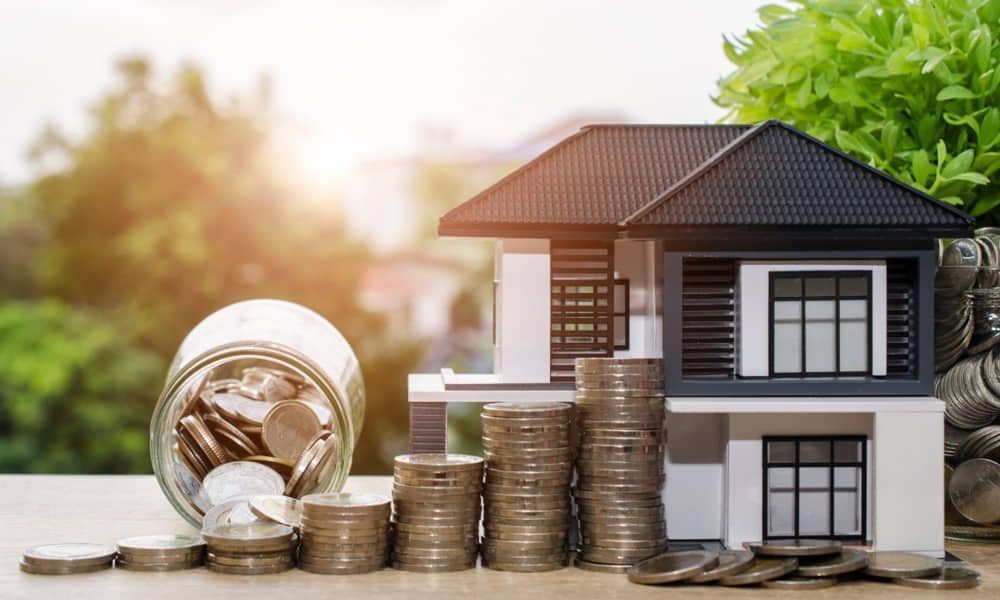CALL US NOW (02) 8365 2330

Buying an Apartment vs a House as an Investment: Which is the Better Option?
When it comes to property investment in Australia, many investors face the dilemma of whether to buy an apartment or a house. Both options have their unique advantages and disadvantages and the right choice for you depends on various factors, including your financial goals, lifestyle preferences and the market conditions in your area.
In this post, we’ll explore the key differences between buying an apartment and buying a house as an investment, helping you make an informed decision that suits your needs.
Apartment vs a House as an Investment
Cost of Purchase
One of the most obvious factors to consider when choosing between an apartment and a house is the upfront cost.
Houses: Typically, houses tend to be more expensive than apartments, especially in prime locations. The cost of purchasing a house can include the land value, which generally makes the overall price significantly higher. However, houses often come with larger land parcels, which could offer long-term capital growth potential.
Apartments: Apartments are often more affordable, particularly in urban areas where land is scarce. The lower purchase price can make apartments an attractive option for first-time investors or those with a smaller budget. That said, while you may save on the initial outlay, you should also factor in ongoing costs, such as body corporate fees (strata fees), maintenance and insurance.
Capital Growth Potential
Capital growth refers to the increase in the property’s value over time. While both apartments and houses can experience capital growth, the rates and factors influencing growth can differ.
Houses:
Generally, houses in well-established suburbs with access to good schools, public transport and amenities tend to see stronger capital growth over the long term. Since houses come with more land, they tend to appreciate more steadily.
Land is a finite resource and over time, it’s often more in demand, especially in growing areas. Houses with large plots of land also give investors the option to add value through renovations, extensions or development, which can further increase their value.
Apartments:
The capital growth potential of apartments can be more unpredictable. While apartments in prime locations may experience solid capital growth, apartments in oversupplied markets (such as areas with lots of new high-rise developments) may struggle with growth.
Additionally, the value of apartments can be more heavily influenced by factors such as the overall health of the rental market and the demand for rental properties.
Rental Yield
Rental yield is an important metric for property investors, as it determines the income you can earn from renting out your property. Higher rental yields are often seen as more attractive for investors seeking regular cash flow.
Houses: Houses tend to offer lower rental yields compared to apartments, particularly in high-demand areas. While they may provide greater capital growth potential, the rent you can charge for a house may not generate as much income relative to the property’s value.
Apartments: Apartments often offer higher rental yields than houses, especially in urban areas or locations close to universities, hospitals and business districts.
The lower purchase price and smaller size often allow investors to generate more income relative to their investment, making apartments a popular choice for those seeking better rental returns.
Maintenance and Management
Ongoing maintenance and property management are important considerations for investors.
Houses: Houses typically come with more maintenance responsibilities. The larger land area means you’ll need to manage outdoor spaces, such as gardens, driveways and fences.
You might also face higher repair costs due to the size and complexity of the property. However, some investors view this as an opportunity to add value by making improvements.
Apartments: Apartments generally require less maintenance than houses, especially in terms of outdoor space. However, investors must factor in strata fees, which cover the cost of maintaining common areas (such as lifts, hallways and gardens).
The level of strata fees can vary significantly between buildings, so it’s important to research the building’s financial health before purchasing. Additionally, apartments may experience higher turnover rates, meaning you may need to invest in property management services to ensure your investment is well looked after.
Market Demand
The type of property you invest in will influence the demand for rental properties in the area, which directly impacts your rental income.
Houses: In suburbs where families dominate, houses often have strong demand. Larger properties with backyards, proximity to schools and family-friendly amenities typically attract long-term tenants who are willing to pay a premium for space. In these areas, houses tend to have stable demand, making them a solid choice for long-term investment.
Apartments: Apartments often attract different types of tenants, such as singles, couples and students. In highly urbanised areas, demand for apartments can be strong, especially if they are near public transport, shopping or universities.
However, in areas where the supply of new apartments is high, you might face more competition for tenants, potentially leading to longer vacancy periods or reduced rental income.
Liquidity
Liquidity refers to how easily you can sell your property if needed. Some property types are easier to sell than others and this can impact your ability to cash out of an investment quickly.
Houses: Houses in established, sought-after areas tend to have a larger pool of potential buyers, which can make them easier to sell. However, houses in more remote or less desirable areas may take longer to sell, especially if the market is slow.
Apartments: Apartments can be more difficult to sell in areas with oversupply or buildings with high vacancy rates. On the other hand, apartments in prime locations (such as inner-city areas) tend to attract strong demand and can be more liquid when it’s time to sell.
Future Development Potential
When investing in property, it’s important to consider its potential for future growth and development. Some properties offer opportunities to add value over time, while others may have more limited options for expansion or modification.
Houses: Houses with land often provide greater opportunities for future development. For example, if your property is located in a high-growth area, you could potentially subdivide the land or develop the property into multiple dwellings (subject to zoning laws). This flexibility can add significant value to your investment.
Apartments: The development potential of an apartment is generally limited, as you’re restricted by the building’s existing structure and zoning laws. However, apartments in rapidly growing areas could experience a surge in value if the surrounding infrastructure improves or demand for rental properties increases.
Wrapping Up
Whether you choose to buy an apartment or a house as an investment depends on your goals and the specific circumstances of the market you're investing in. If you’re after a higher rental yield and more affordable entry points, apartments may be the better option. If you’re seeking long-term capital growth, more land and the potential for future development, a house could offer better returns over time.
Before making a decision, it’s crucial to assess your financial situation, investment strategy and the particular location you’re looking at.
Talk to an expert property advisor or mortgage broker—like our team at ALCHEMYFIN—to guide you through the process and help you make the right investment.
Contact us today to get started!



Quick Links
All Rights Reserved | ALCHEMYFIN






